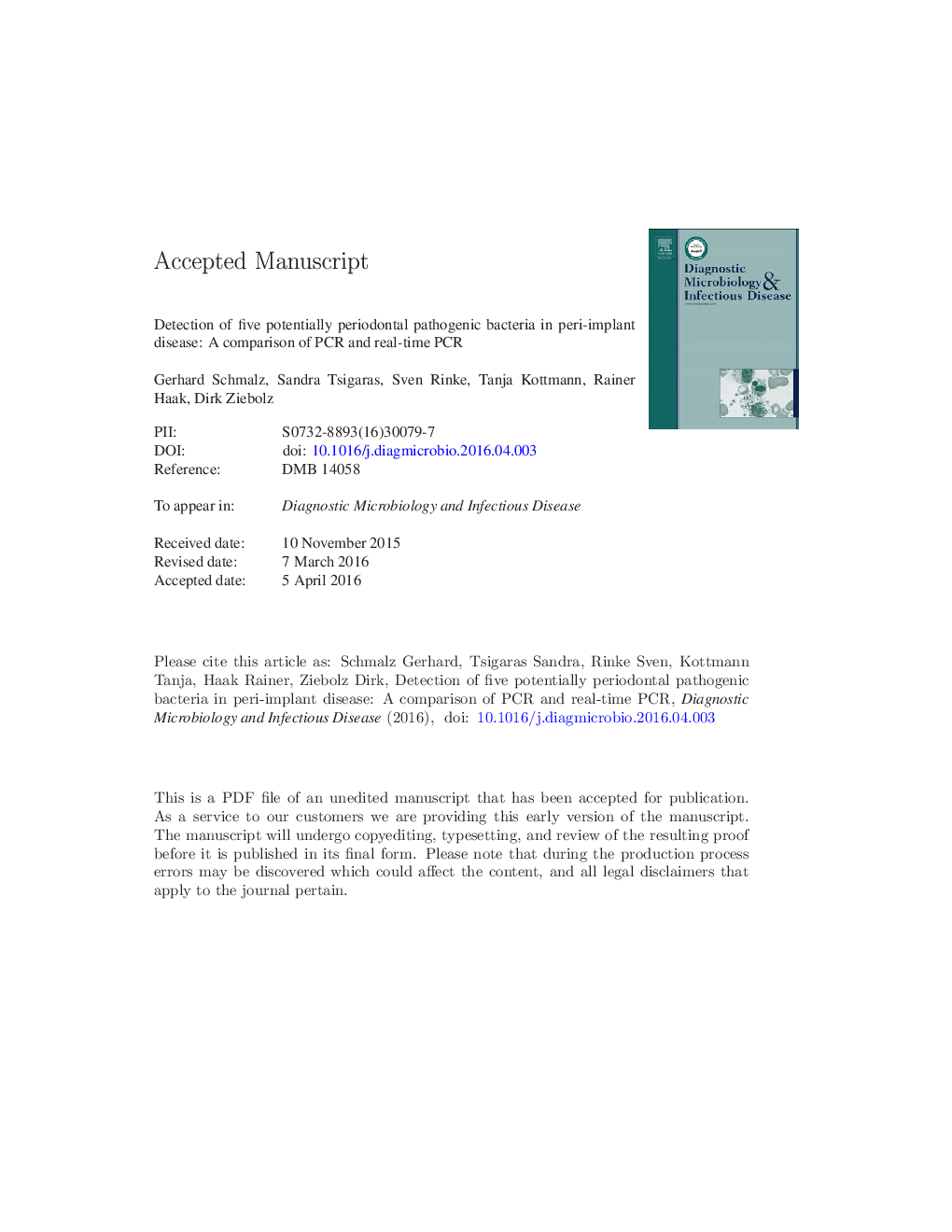| Article ID | Journal | Published Year | Pages | File Type |
|---|---|---|---|---|
| 6115415 | Diagnostic Microbiology and Infectious Disease | 2016 | 22 Pages |
Abstract
The aim of this study was to compare the microbial analysis methods of polymerase chain reaction (PCR) and real-time PCR (RT-PCR) in terms of detection of five selected potentially periodontal pathogenic bacteria in peri-implant disease. Therefore 45 samples of healthy, mucositis and peri-implantitis (n = 15 each) were assessed according to presence of the following bacteria using PCR (DNA-strip technology) and RT-PCR (fluorescent dye SYBR green-system): Aggregatibacter actinomycetemcomitans (Aa), Porphyromonas gingivalis (Pg), Treponema denticola (Td), Tanerella forsythia (Tf), and Fusobacterium nucleatum (Fn). There were no significant correlations between the bacterial and disease patterns, so the benefit of using microbiological tests for the diagnosis of peri-implant diseases is questionable. Correlations between the methods were highest for Tf (Kendall's Tau: 0.65, Spearman: 0.78), Fn (0.49, 0.61) and Td (0.49, 0.59). For Aa (0.38, 0.42) and Pg (0.04, 0.04), lower correlation values were detected. Accordingly, conventional semi-quantitative PCR seems to be sufficient for analyzing potentially periodontal pathogenic bacterial species.
Related Topics
Life Sciences
Immunology and Microbiology
Applied Microbiology and Biotechnology
Authors
Gerhard Schmalz, Sandra Tsigaras, Sven Rinke, Tanja Kottmann, Rainer Haak, Dirk Ziebolz,
